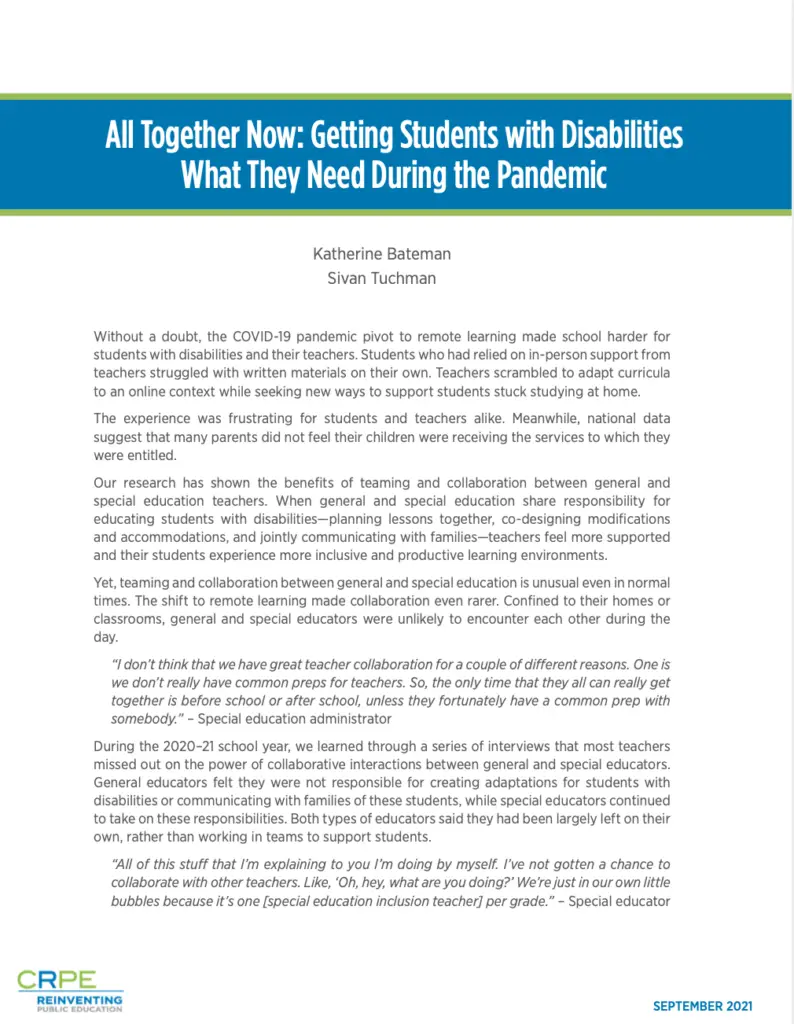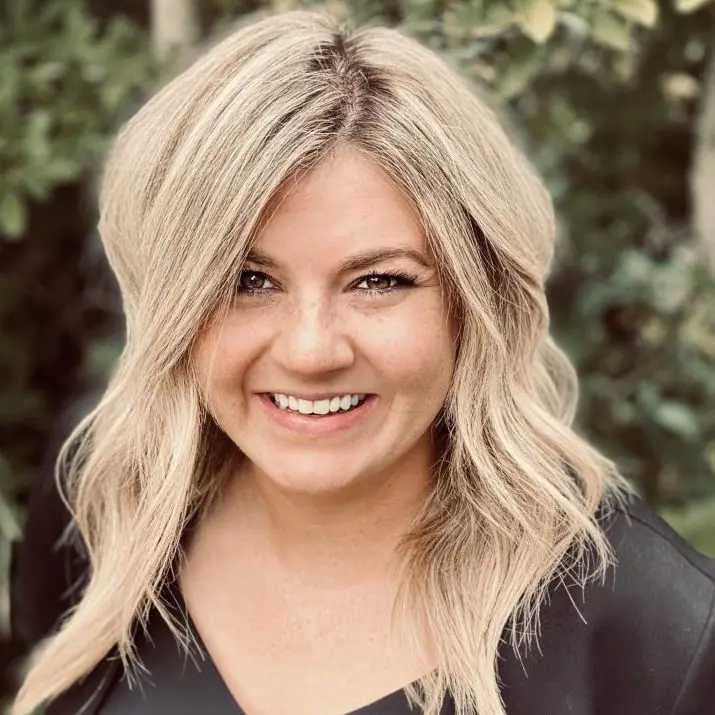Without a doubt, the COVID-19 pandemic pivot to remote learning made school harder for students with disabilities and their teachers.
In a series of interviews with special education administrators, school administrators, special educators, general educators, parents, and teachers, we sought to learn more about each individual’s experience in special education during the pandemic. We asked questions about current practices, changes in roles and job responsibilities, data collection, compliance, and overall satisfaction. Quotes in this brief are from the first wave of data collection, conducted from December 2020 to February 2021.
We found:
- General and special education teachers rarely collaborated on lesson plans. Both types of educators said they had been largely left on their own, rather than working in teams to support students.
- Special educators were largely responsible for providing instructional support and communication with families, even in inclusive settings where students with and without disabilities are educated together.
- Few general educators received the training they needed to support students with disabilities in remote settings.
Teachers—general and special education alike—want to deliver the best education possible for their students with disabilities and work in collaboration with their peers to do so. Doing this work is difficult, and it requires continuous learning and growth by all teachers. It is up to school leaders to cultivate the mindset that special education students are everyone’s students.





